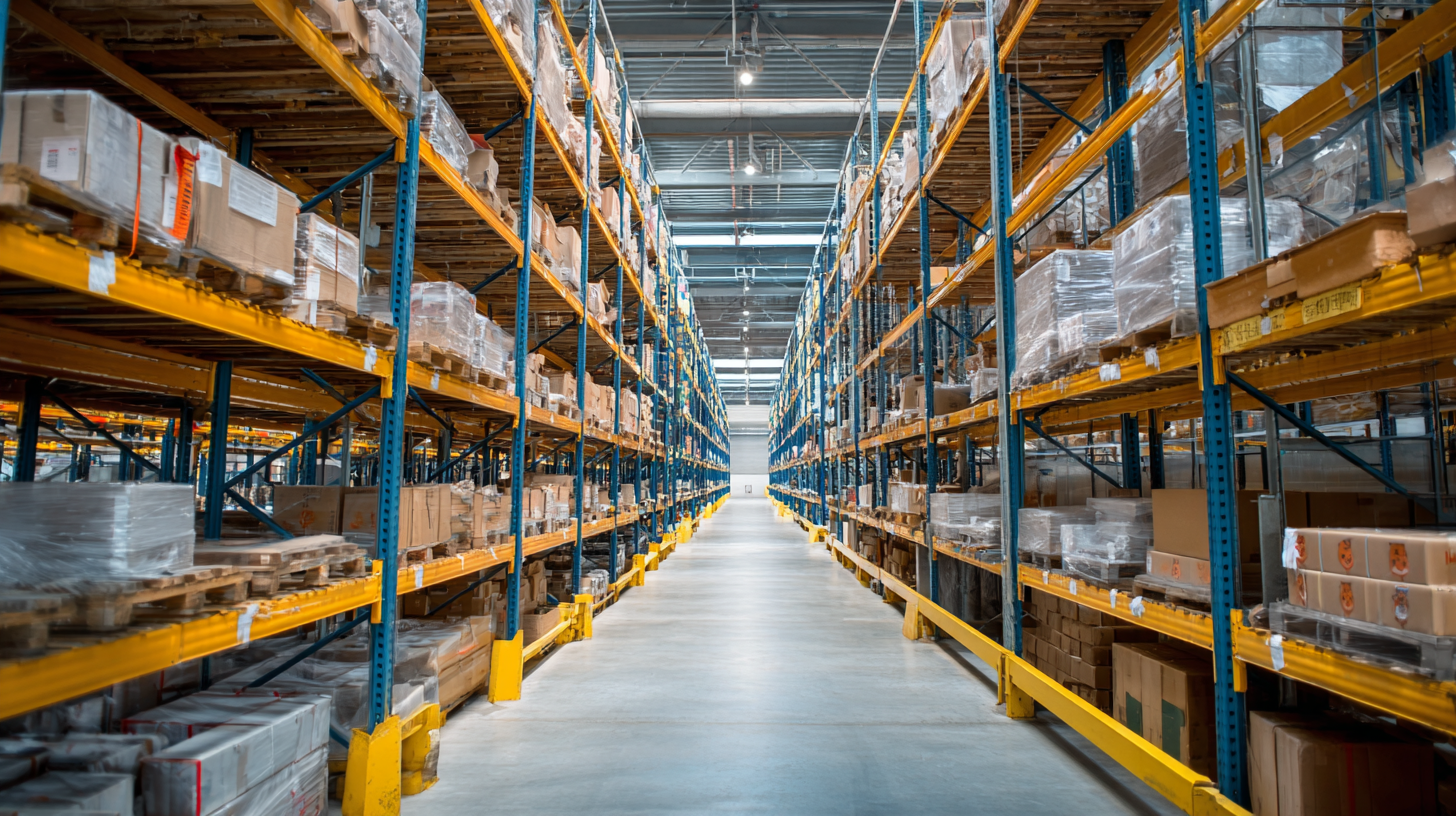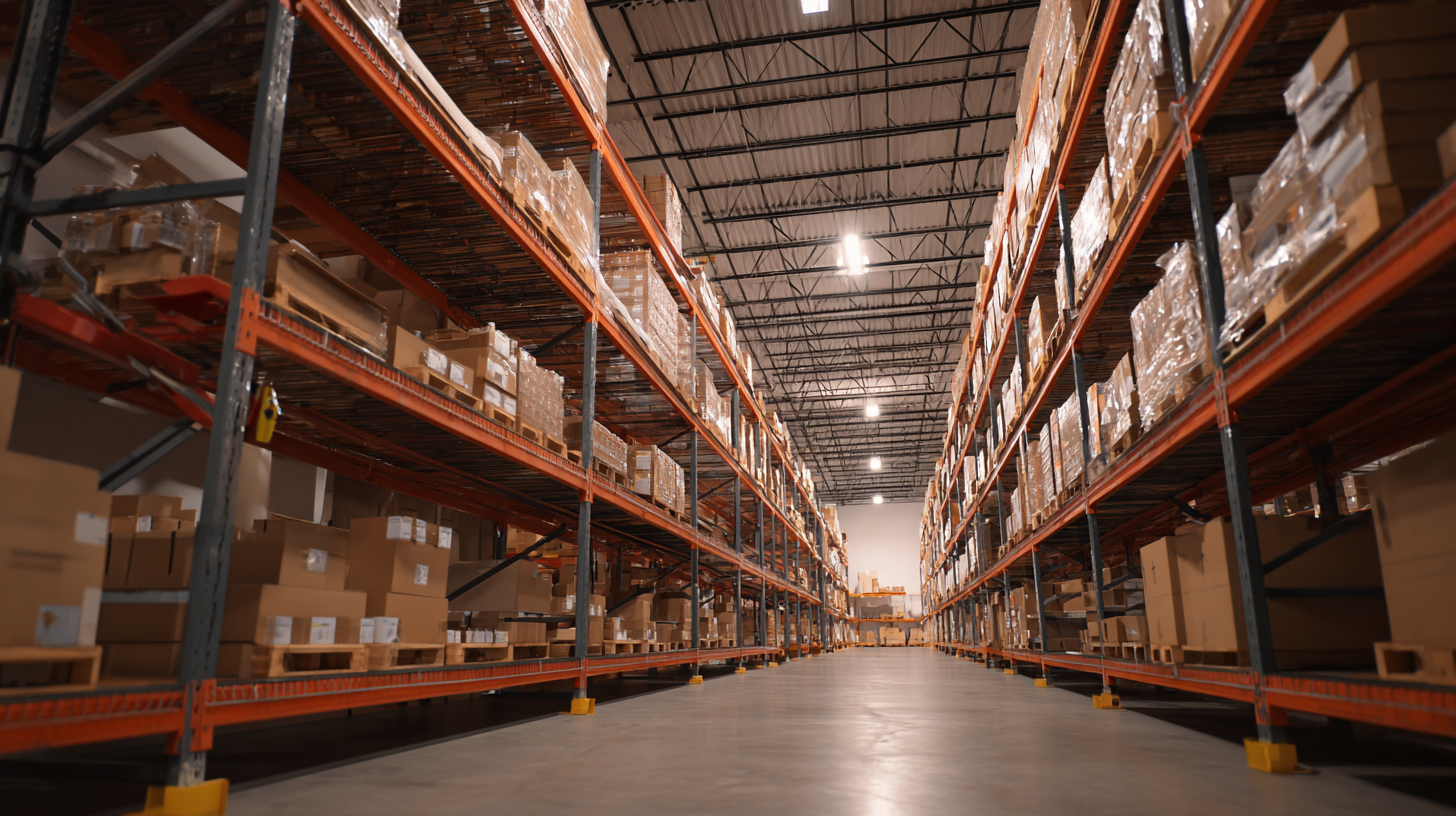Maximize Your Space: A Step-by-Step Tutorial on Choosing the Best Warehouse Shelving Racks
In today’s fast-paced business environment, maximizing space efficiency is crucial for operational success, especially when it comes to warehouses. One of the most effective ways to optimize your storage area is by investing in high-quality Warehouse Shelving Racks. These racks not only allow for better organization by providing designated spaces for products but also enhance accessibility, ultimately streamlining your workflow. The phrase "精工细造,中国制造,服务世界" encapsulates the essence of the quality and craftsmanship found in Chinese manufacturing, highlighting the importance of selecting the right materials and designs for your storage solutions. This blog provides a step-by-step tutorial aimed at helping you identify the best Warehouse Shelving Racks for your unique needs, ensuring you can maximize every inch of your space while benefiting from the excellence of Chinese engineering.

Understanding Different Types of Warehouse Shelving: A Comprehensive Overview
When selecting the right shelving racks for your warehouse, it's essential to understand the various types available, as each type serves different needs and enhances operational efficiency. The most commonly used shelves in warehouses include
selective pallet racks, which allow for direct access to stored items. These racks are particularly useful in operations that need to frequently retrieve items of varying sizes. They maximize space by using vertical height while providing the
flexibility to adapt to changing inventory needs.
Another popular option is the
drive-in and drive-through racking systems. These designs are ideal for handling large quantities of similar products, as they allow forklifts to drive directly into the rack for easy loading and unloading. This type of shelving is particularly advantageous for high-density storage, reducing the amount of space required while increasing the number of items stored. Additionally, there are
cantilever racks, which are great for storing long items like lumber or pipes, offering flexibility in height and depth adjustments. By understanding these various types of warehouse shelving, you can make informed decisions that significantly enhance storage efficiency and accessibility in your warehouse operations.
Key Considerations for Selecting Warehouse Shelving: Space, Weight, and Accessibility
When it comes to maximizing your warehouse space, selecting the right shelving racks is essential. The key considerations you need to keep in mind include the dimensions of your available space, the weight capacity of the racks, and the accessibility they provide. First, assess the layout of your warehouse. Measure the height, width, and depth of the area where you plan to install the shelving. This will allow you to choose racks that fit perfectly and make the most of your vertical and horizontal space.
Next, consider the weight of the items you need to store. Each shelving unit has a specific load capacity, so it’s crucial to match the racks to the weight of your inventory. Choosing too weak a rack may lead to accidents or damage to your goods. Additionally, think about how frequently you’ll need to access the items stored. Opt for shelving that allows easy retrieval, especially for high-turnover items. Adjustable shelving can add flexibility, allowing you to adapt to changing inventory needs over time. By focusing on these key considerations—space, weight, and accessibility—you can make an informed choice that enhances your warehouse efficiency.
Industry-Driven Data: The Impact of Optimal Shelving on Inventory Management Efficiency
Efficient inventory management is a crucial aspect of any warehouse operation, where optimized shelving can make a significant difference. Industry-driven data reveals that choosing the right shelving racks not only maximizes space but also enhances overall operational efficiency. Well-designed shelving systems allow for easier access to products, streamline picking processes, and reduce time wasted in locating items. This is particularly important in sectors where quick turnover is essential, as it directly impacts productivity and customer satisfaction.
Moreover, the impact of optimal shelving extends beyond just space management. Trends indicate that warehouses utilizing adjustable and modular shelving can adapt to changing inventory volumes and types, which is vital in today’s fast-paced market. By investing in quality shelving solutions tailored to specific inventory needs, businesses can minimize errors in order fulfillment and improve inventory accuracy. Therefore, the strategic choice of warehouse shelving is not only a matter of organization but a fundamental component of enhancing overall inventory management efficiency.
Maximize Your Space: A Step-by-Step Tutorial on Choosing the Best Warehouse Shelving Racks
| Dimension | Description | Impact on Efficiency | Optimal Condition |
|---|---|---|---|
| Weight Capacity | Max weight each shelf can support | Prevents overloading and accidents | Ensure compliance with safety standards |
| Shelf Height | Distance between each shelf | Optimizes use of vertical space | A maximum of 6 feet for easy access |
| Material | Type of material used (metal, plastic, wood) | Durability and load-bearing capabilities | Metal materials are preferred for heavy loads |
| Accessibility | Ease of retrieving and storing items | Increases speed of inventory management | Aisle width of at least 3 feet |
| Configuration | Arrangement of racks (single, double-sided) | Maximizes the utility of space | Customize based on storage requirements |
Cost-Benefit Analysis: Investing in Quality Warehouse Shelving for Long-Term Savings
Investing in quality warehouse shelving racks can lead to significant long-term savings, making it an integral decision for businesses looking to optimize their storage capabilities. According to a report published by the Warehouse Management Association, companies that invest in high-quality shelving can reduce their overall operational costs by up to 20%. This reduction is primarily achieved through improved organization, which boosts efficiency and minimizes the time employees spend locating items. Moreover, durable shelving racks have a longer lifespan, which translates to lower replacement costs over time.

Additionally, a cost-benefit analysis conducted by the Material Handling Industry (MHI) indicates that efficient warehouse systems can enhance productivity by 30%. By optimizing vertical space with robust shelving, businesses can accommodate more inventory without the need for costly expansions. This smart use of space not only supports higher stock levels but also improves accessibility and workflow, reducing the likelihood of errors and accidents. Ultimately, investing in quality shelving is not just a matter of immediate expenditure; it’s a strategic decision that can yield substantial financial returns and operational efficiencies for years to come.
Maximizing Space Utilization: Innovative Shelving Solutions for Modern Warehouses
Maximizing space utilization in modern warehouses is crucial for improving operational efficiency. As the storage and warehouse leasing market is projected to grow at a CAGR of over 7.8% from 2025 to 2032, surpassing USD 214.11 billion, businesses must invest wisely in their shelving solutions. Innovative warehouse shelving racks can significantly enhance inventory organization and accessibility, allowing for a streamlined workflow.

Tips for optimizing your shelving space include implementing vertical storage solutions. Utilizing the height of your warehouse with adjustable racking systems can dramatically expand your storage capacity. Additionally, consider integrating modular shelving that can be easily reconfigured to accommodate changing inventory needs. This adaptability is vital as consumer preferences continue to evolve, driving a growth of USD 2.3 billion in the warehouse racking market from 2025 to 2029.
Another effective strategy is to analyze the flow of goods within the warehouse. Establishing designated zones for different product categories can reduce travel time and improve order accuracy. Coupling layout optimization with advanced technologies like AI can further enhance efficiency, ensuring your warehouse remains competitive in a rapidly changing market.

